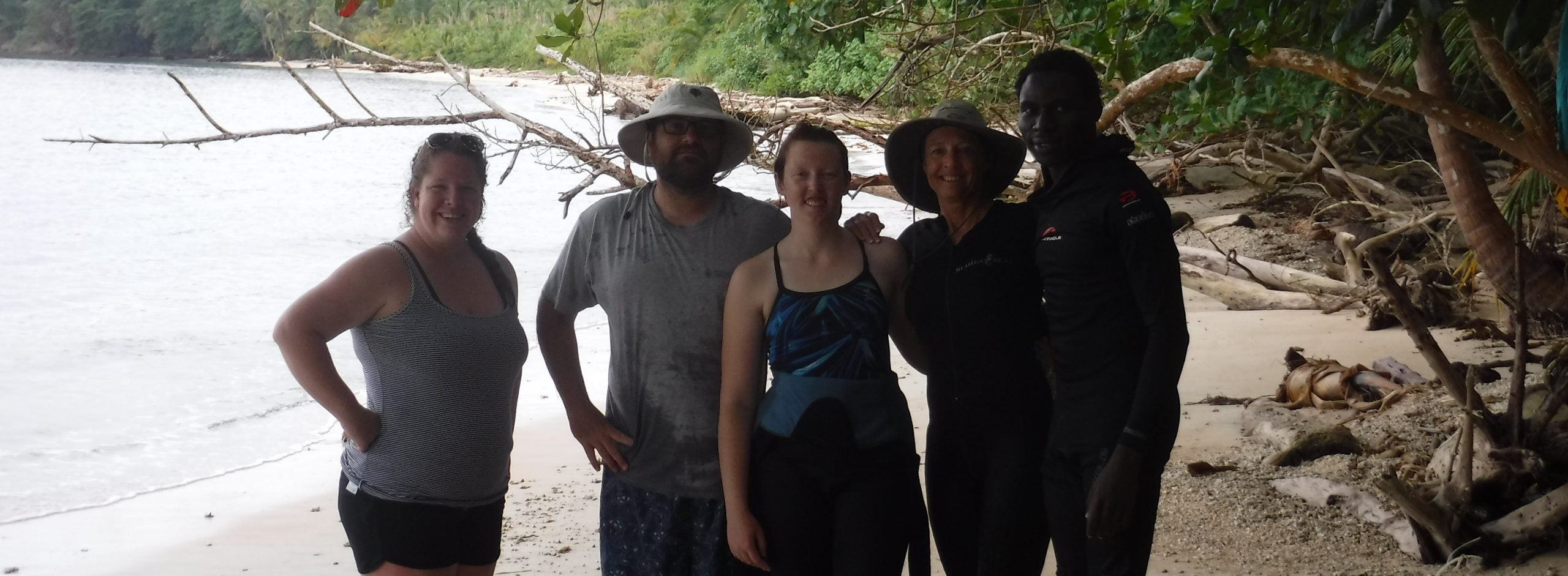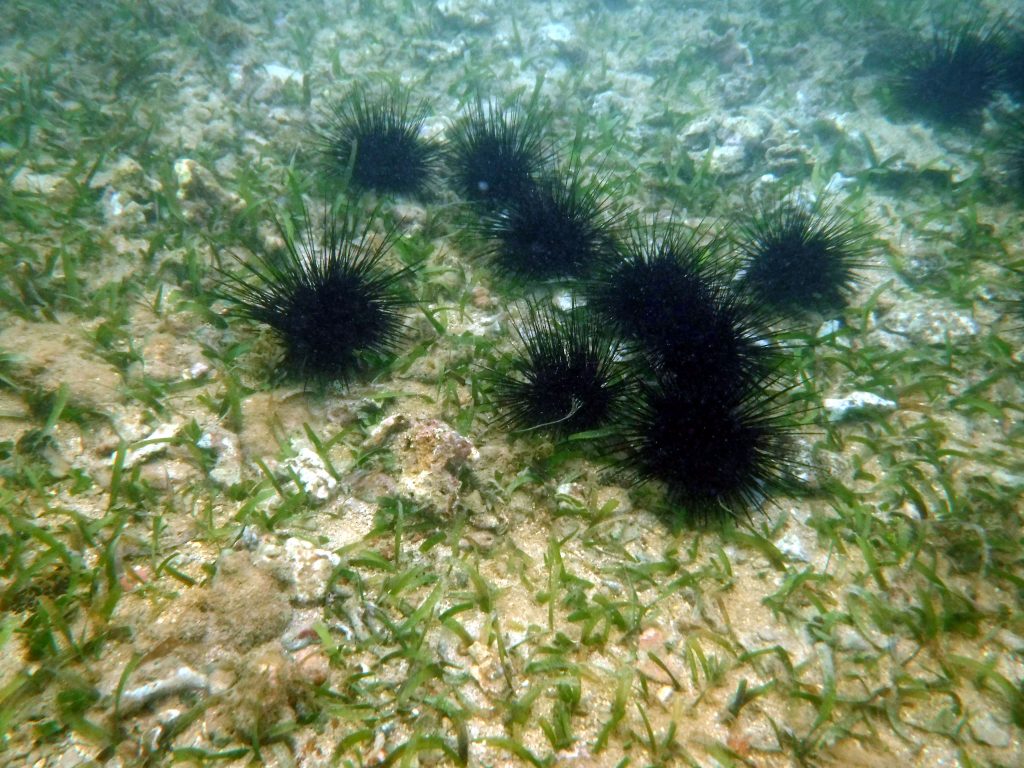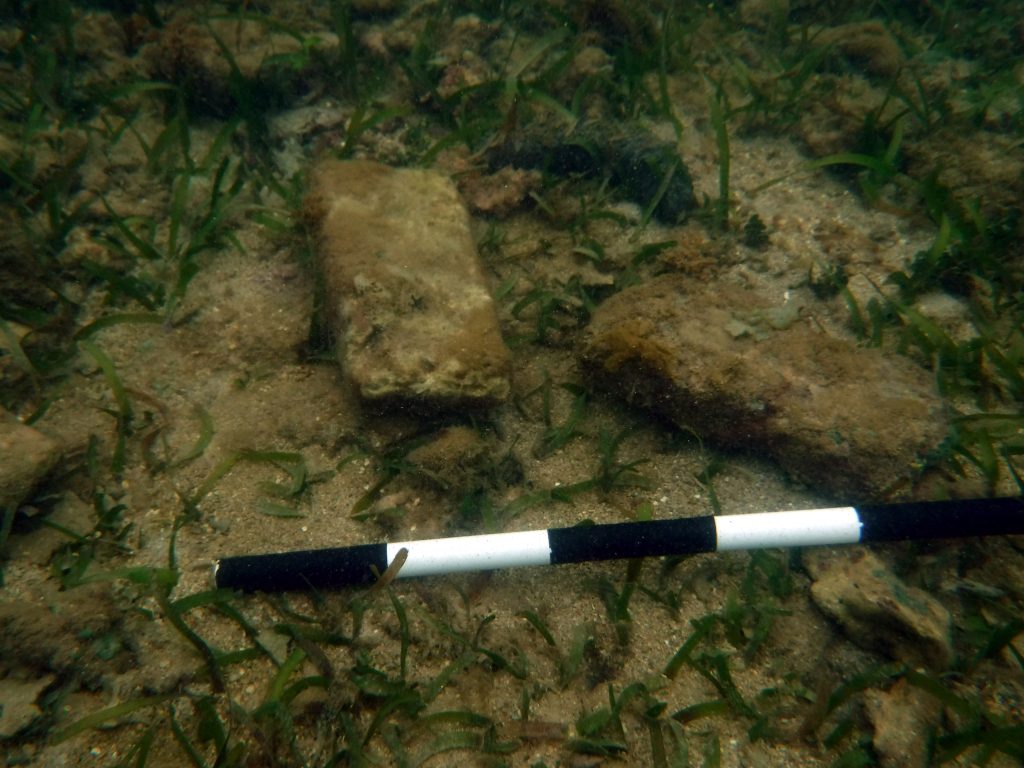Today we only had two boats available to take us to the wreck sites. The snorkel group, which included Dr. Harris, Dr. Richards, Kelsey, Wale, and I, elected to hike through Cahuita National Park to get to the brick scatter near the Cannon site. This brick scatter was only recently discovered when Dr. Harris and Mitch were mapping the shoreline onto the Cannon site. Since we had less gear to carry than the divers, we figured that it would make the most sense to leave the boats for the people with the heavier equipment.
The hike through the forest was interesting. We saw quite a few animals, including lizards, blue crabs and a sloth. Unfortunately, we did not come across any monkeys, because our gear created too much noise.
After 45 minutes of hiking, crossing rivers and dodging ant colonies, we arrived where Dr. Harris thought the site was located. The marker that she and Mitch had placed earlier had disappeared; however, she recognized the landscape and the prominent fallen trees on the beach. Dr. Richards spotted the bamboo stick that marked the Cannon site and it appeared to be a lot farther away than we had expected. The place Dr. Harris recognized happened to be right next to a hiking bridge which will make it easier to relocate in the future.
We began to snorkel along the shoreline to locate the “pink” bricks which Dr. Harris and Mitch said went all the way up to the shore. Kelsey and Dr. Richards found the bricks by swimming along the shoreline, while Wale and I swam out to the anchors on the Cannon site and followed the bricks back in. The bricks towards the shoreline were in sandy areas which were sometimes peppered in the usual sea urchin. The bricks closer to the anchors were found amongst sea urchins and the occasional bladed fire coral. Since Kelsey was not wearing a dive skin, she swam back to shore to help Dr. Harris direct the snorkelers.
We were all soon called back into shore to regroup and come up with a search plan. On the swim back to shore, I came across a strange item. It looked to be a cog of some sort, but it was not made of iron; it may be stone instead. I also spotted a piece of buried timber, it is possibly an artifact, but we are not sure if it is natural or part of a shipwreck.
Dr. Harris brought a photo scale and took pictures of the timber, but we were unable to locate the strange cog again for documentation. After that, we started our hike back to the entrance of the park, which was long and exhausting, because all of our gear was wet by then.
The scuba divers, who traveled via boat to the Brick site continued to map the site using baseline offsets. Some groups finished their 5 meter squares, but because of the high concentration of bricks in the center of the site, not all of the groups were able to finish their sections in one dive.
Overall, it was a very productive day despite not having the number of boats that we were accustomed to using.
-Sydney


